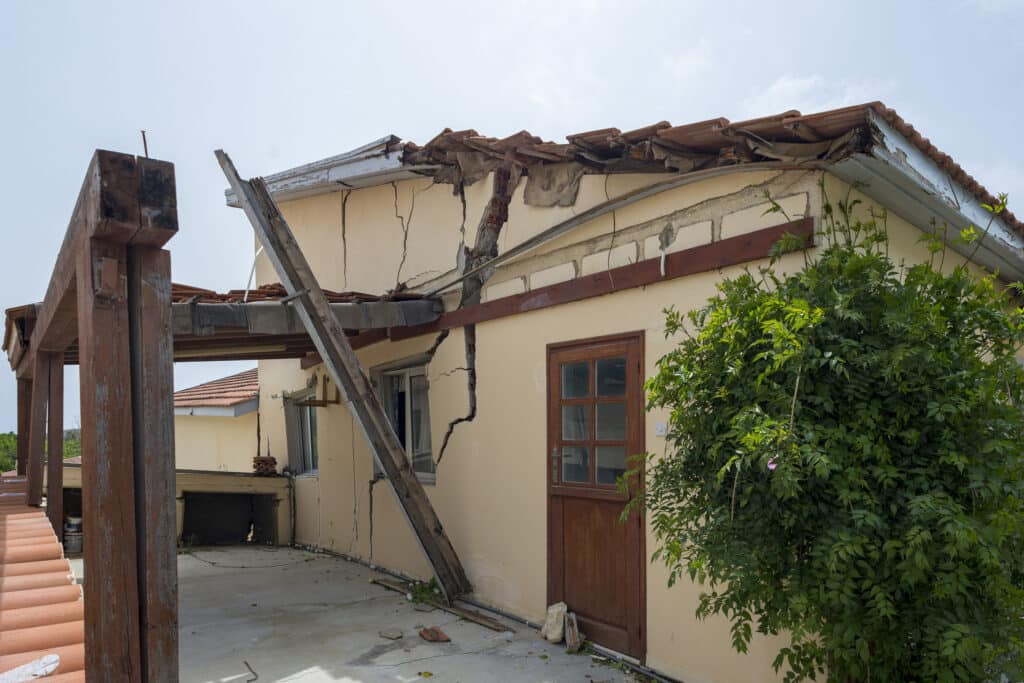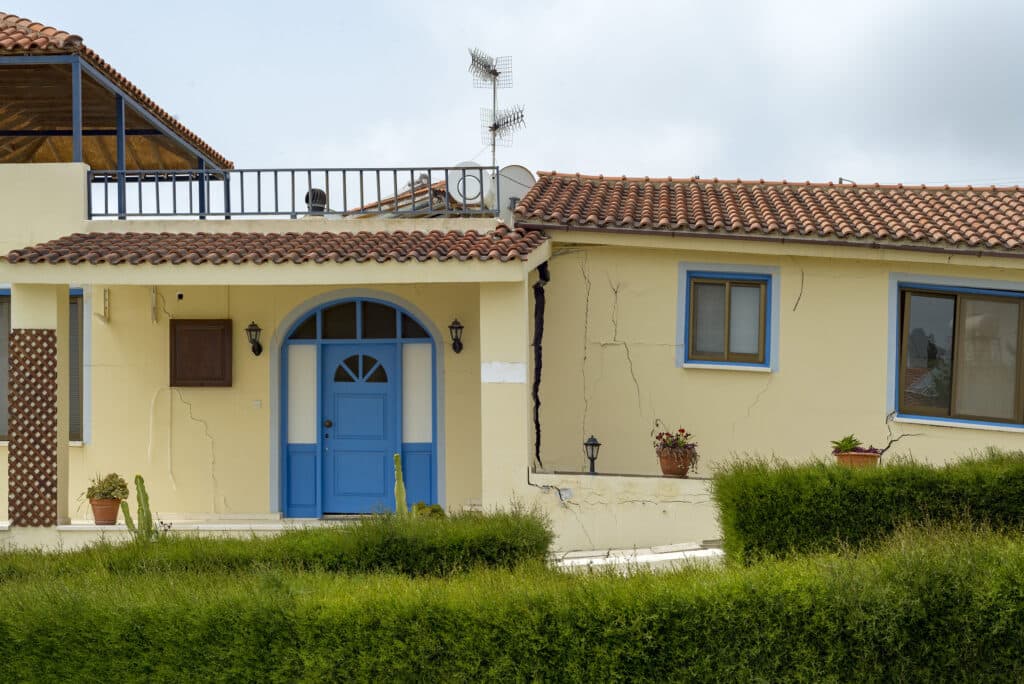Government has earmarked funds to stabilise the landslide that has caused houses to crumble, but there is still no decision over compensating the owners
The government is about to pay €33 million to correct the landslide that has destroyed up to 250 homes in the Pissouri area, cracking walls, buckling streets and driveways and smashing water and drainage pipes.
But not one euro of that €33 million will go to compensate homeowners who have had to vacate their properties and watch their homes crumble over the past 11 years through no fault of their own.
And it is doubtful whether the sum is even enough to correct the negative effects of landslide, with the Pissouri Housing Initiative Group (PHIG) saying the state should have acted earlier, when the problem first appeared in 2012. They say the area will probably need more than what is budgeted, as the landslide is continuing to affect hundreds of homes in the area.
Meanwhile residents have been involved in an ongoing battle to receive some form of compensation from various interior ministers, who have been ping-ponging them around for almost a decade.
During a December 2022 session of the cabinet, a plan was approved for support works in the vicinity of the landslide that is affecting the village and specifically the ‘Limnes’ area.
According to the PHIG group’s lawyer Elina Zoi, around 250 homes have been built on the landslide, but not all have seen the effects yet.
However, she added that it is only a matter of time before the subsidence impacts other homes in the area.
“I don’t exaggerate when I say that the area resembles a bombed-out landscape,” she told parliament in December.
The works, according to the cabinet decision, will be overseen by the public works department, who will be further staffed with two civil engineers and two technical engineers. The overall oversight of the multi-million projects will be given to the department, the Limassol regional office, the Geological Survey Department, the waterboard, and the mining department.
The first phase of the project included the creation of an arched pile wall, to stabilise the more elevated area, while the second phase will include the construction of an embankment at the foot of the landslide to stop it.
These two works are set to cost the state €33 million, of which €5.8 was allocated in 2022.
Limassol district began the first phase of the project already, and is set to complete it by September 2023.
However, Zoi insists that the works should have started earlier, and the arched pile wall already constructed by the Limassol district office is not enough.
She said that the two projects are not sufficient as proper drainage needs to be created for other homes to avoid subsidence. The drainage is for upstream of the landslide and fails to include the landslide area.
But she conceded that at the point they have reached, the residents would benefit from any works conducted, as the situation continues to worsen.
Zoi confirmed that no compensation has been given to any of her clients and insists that compensating homeowners should be a political decision, as when buying the houses, the owners were unaware of the issue, as were the builders, who were mostly small construction companies.
“The moment I will be forced to file a lawsuit against the Republic of Cyprus for the compensation of those affected by the landslide in Pissouri, will be the moment I will have to admit that the Republic of Cyprus does not respect either the people or the principles it preaches,” she told the House interior committee in November 2022.
She said that the picture of the houses that are now ruined is ‘depressing’ as they once housed lives.
“The picture is depressing and affects the psychology and health of the people who have remained there because they have nowhere else to go,” she said.
Paying off bank loans on a crumbling house you were forced to leave while paying rent on another property is also an issue.
“In addition, the problem of banks demanding loan installments from people who have been forced to pay rent after their homes have been declared uninhabitable is still not resolved,” she said.
Speaking to the Sunday Mail, one of the former residents and the head of the PHIG Peter Fields said that they had been writing to local authorities since 2012.
“Nothing has happened, and at the start we were told to leave,” he told the Sunday Mail.
He added that many residents were given notice, when the cracks appeared, and told to uproot and leave the area.
Many, he said, like him are pensioners, who have no other income but their pensions, while insurance companies did nothing to help them.
Commenting on the compensation they expect, Fields said that the interior ministry is now saying they would look into the matter, once the support works are completed.
“We hope a just end comes of it,” he said, describing the ordeal they have been going through for the past ten years.
Meanwhile the technical chamber, Etek, also echoed the sentiments expressed by the PHIG lawyer, saying that the studies for the second phase could have been completed earlier.
“We consider that the required slope measurements for the purposes of ensuring the effectiveness of the second phase of the project, could have already been completed, utilising the time period before the completion of the first phase of the project or the time period between the first and second phases of the project, due to the time required by the process of preparing the tender documents for the second phase of the project,” Etek said last month, adding this was clarified by participants in the November session of the House interior committee.
They added that for several years the chamber has raised the urgent need to investigate the Pissouri problem and that the active landslide in the community requires immediate measures to be taken to protect human life.
Commenting on whether problem could have been foreseen, Etek said that geohazards concerning specific regions cannot be dealt with using individual studies per development, but rather need a broader mapping by the state, showcasing the specific risks in each area, and informing residents and engineers.
And in the meantime, the residents are still waiting.









Click here to change your cookie preferences